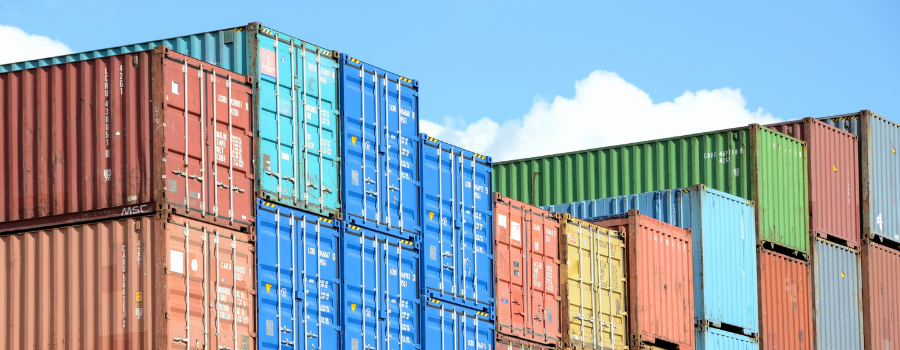De Port of Antwerp-Bruges (PoAB) biedt onderdak aan de grootste petrochemische bedrijvencluster in Europa. De haven, een van de belangrijkste aanvoerlijnen voor de Belgische (en bij uitbreiding de Europese) economie, is daarom een uiterst complexe omgeving waarvan het beheer op alle vlakken unieke uitdagingen met zich meebrengt. Het havenbedrijf overziet dagelijks de activiteiten van honderden bedrijven en organisaties op haar terreinen. Allen organisaties die dagelijks geconfronteerd worden met risico’s en incidenten, welke op hun beurt invloed kunnen hebben op de continuïteit van andere bedrijven in de haven en de havenwerking in het algemeen.
In haar beheersrol worden de havenautoriteiten van PoAB dus ook betrokken bij de niet-eigen risico’s te en kan het maatregelen treffen die de impact van incidenten op de activiteiten in de haven kunnen beperken. Welk netwerkbeleid kan PoAB uitdragen om deze risico’s beter te beheersen? Een complex veiligheidsvraagstuk waar Esger ten Thij zich over gebogen heeft in het kader van zijn afstudeerstage integrale veiligheidskunde bij Avans Hogeschool (Nederland). Daartoe voerde hij een studie uit naar reële én bijna incidenten waar het havenbedrijf en haar partners mee te maken krijgen. De bijna incidenten of zogenaamde ‘near misses’ zijn ongeplande gebeurtenissen die geen schade of letsel als gevolg hebben, klassieke incidenten daarentegen hebben wel gevolgen. Naast het in kaart brengen van deze gebeurtenissen en hun impact in de haven onderzocht Esger ook hoe technieken van organisatieleren kunnen toegepast worden in de haven om deze risico’s beter te begrijpen en zo te beheersen. Organisatieleren omvat het proces van leren uit situaties uit het verleden om tot betere inzichten en organisatieprocessen te komen in de toekomst.
Het meest opvallende resultaat uit Esgers onderzoek is dat er een groot verschil bestaat tussen de verschillende niveaus waarop er van near misses kan geleerd en verbeterd worden. Zo is er op het operationele niveau vooral sprake van ‘learning by doing’, ofwel het individueel en ad hoc leren van dergelijke near misses zonder dat de getrokken lessen structureel onderling gedeeld worden. Dit terwijl op het tactische niveau managers van het havenbedrijf telkens informatie met elkaar uitwisselen na (potentieel) disruptieve gebeurtenissen. Op dat tactische niveau kan echter wel nog winst geboekt worden door het structureel delen van informatie met externe partijen zoals hulpdiensten, die vaak de gewoonte hebben om dergelijke gebeurtenissen structureel te evalueren. Daarnaast detecteerde hij een duidelijke behoefte van zowel interne en externe partijen om meer te oefenen op zowel het operationele als het tactische niveau, kennis te delen met andere havens en de communicatie met interne afdelingen en externe partners omtrent (bijna) ongevallen te verbeteren.
Tot slot kwam Esger tot enkele aanbevelingen die het havenbedrijf kan implementeren om kennis te delen tussen de verschillende partijen en zo het leren van (bijna) incidenten te bevorderen. De eerste aanbeveling is de standaardisatie van rapportering volgens het 6 w’s principe: wie, wat, waar, wanneer, waarom en hoe. Vervolgens dient het havenbedrijf ook werk te maken van een systeem dat efficiënt en overzichtelijk informatie kan voorzien in het opvolgen en afhandelen van incidenten. Tot slot is er een laatste aanbeveling om meer te oefenen met interne en externe partners om kennis, praktijkervaring, coördinatie en communicatie te bevorderen. Met partners kan er meer geoefend worden op tactisch niveau door middel van simulaties zoals tabletop oefeningen. Voor het operationele kader dient er ingezet te worden op fysieke oefeningen waarin verschillende partijen multidisciplinair samenwerken.
*Het onderzoek dat Esger ten Thij uitvoerde bij Port of Antwerp-Bruges paste in een stage die hij liep bij PM en sluit aan bij een langdurig onderzoek rond veiligheid in de Port of Antwerp-Bruges die collega’s Hugo Marynissen Steven van den Oord via de UAntwerpen uitvoeren.
